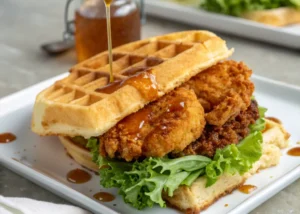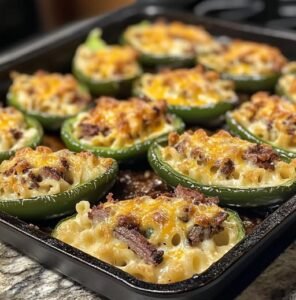
Homemade Chokecherry Jelly: Nothing Says Homemade Goodness Quite Like It!
Hey there, Jason Griffith here! There’s a certain magic to foraging for wild fruits and transforming them into something truly special in your kitchen. And if you’re lucky enough to live where chokecherries grow (or can find them at a local market), you’re in for a treat! This Homemade Chokecherry Jelly is a vibrant, sweet-tart spread that perfectly captures the unique flavor of these often-overlooked berries. It’s ideal for topping your morning toast, filling pastries, or simply as a thoughtful, homemade gift.
Why I Love This Recipe
I’m passionate about traditional foodways and the joy of preserving nature’s bounty, and making chokecherry jelly is a deeply satisfying experience. What I particularly love about this recipe is the distinct, almost almond-like flavor of chokecherries, which, when combined with sugar and a hint of lemon, transforms into a beautifully clear, jewel-toned jelly. The process, while requiring a bit of patience for juice extraction, is incredibly rewarding. There’s truly nothing quite like spreading homemade jelly on your morning biscuit, knowing exactly where every ingredient came from. It’s pure, unadulterated homemade goodness!
Ingredients
Here’s what you’ll need to create this delightful chokecherry jelly:
- 4 cups Chokecherry Juice (from approximately 5-6 lbs Chokecherries)
- 2 to 6 cups Sugar (granulated, *see note below)
- 1 medium lemon (juiced, optional, but recommended for brightness and set)
Swaps and Notes
- Chokecherries: These are small, tart berries native to North America. They have a distinct flavor. Do not confuse them with other wild cherries.
- Sugar Amount: This is a crucial note! The range of sugar (2 to 6 cups) is wide because the natural pectin content and tartness of chokecherries can vary significantly depending on ripeness and variety. Start with 4 cups and adjust after a gel test. If your juice is particularly tart, you might need more sugar. For a less sweet jelly, use less sugar, but be aware it might not set as firmly without added pectin if you go too low. Lemon juice also helps with the set.
- Lemon Juice: The lemon juice not only brightens the flavor but also adds natural pectin, which is essential for proper gelling. Do not omit unless you are very confident in your chokecherry’s natural pectin level.
- Pectin: This recipe relies on the natural pectin in the chokecherries and lemon. If you find your jelly isn’t gelling, you might need to add commercial pectin in future batches, following its package directions for fruit-specific jellies.
- Jam Pot: Use a wide, heavy-bottomed pot or a Dutch oven for making jelly. This allows for quick evaporation and prevents scorching.
Directions
Making chokecherry jelly involves a few key stages: juice extraction, cooking, and testing for the set.
- Extract Chokecherry Juice: Start by giving your chokecherries a good wash and removing the stems. To extract the juice, you have a couple of methods:
- Steam Juicer Method: Follow your steam juicer’s instructions. This is the easiest and yields the clearest juice.
- Simmering Method: Place the washed chokecherries in a large pot with 1 cup of water. Bring to a boil, then reduce heat and simmer for about 20 minutes, stirring occasionally and crushing the berries with a potato masher to release their juices.
- Strain: Once simmered, strain the mixture through a jelly bag (or several layers of cheesecloth in a colander) suspended over a large bowl. Let it sit for at least 2 hours (or even overnight) to collect all that aromatic juice. Do not squeeze the bag, or your jelly may be cloudy.
- Measure Juice: Now, carefully measure out exactly 4 cups of the prepared chokecherry juice and pour it into a clean jam pot or large, heavy-bottomed saucepan.
- Add Lemon & Sugar: If you like a bit of tang, add in the lemon juice (from 1 medium lemon) along with your sugar. This is the flexible part: use anywhere from 2 to 6 cups of granulated sugar depending on how sweet you want your jelly to be and the tartness of your berries. Start with 4 cups and plan to adjust. Stir to dissolve the sugar.
- Boil Rapidly: Heat your mixture on high heat and bring it to a full, rolling boil, stirring frequently to prevent burning or overflow. A “rolling boil” means it continues to boil even when stirred.
- Cook to Gel Stage: Cook this bubbly delight on medium-high heat, maintaining a rapid boil, until it reaches the gel stage, which should take about 15-20 minutes. You can test for gelling in a few ways:
- Thermometer Method: Use an instant-read thermometer to check for 220°F (104°C). This is a reliable indicator.
- Cold Plate Method: Place a few small plates in the freezer before you start. When you think the jelly is ready, spoon a small amount onto a chilled plate, let it cool for 30 seconds, then push it with your finger. If it wrinkles, it’s ready!
- Fill Jars: Carefully pour the hot, beautiful chokecherry jelly into prepared, hot canning jars, ensuring you leave about a ¼ inch headspace (space between the jelly and the rim of the jar). Wipe the rims clean with a damp cloth.
- Seal & Process (or Refrigerate): Cap the jars with 2-part canning lids (flats and rings), tightening to fingertip-tight.
- For Immediate Enjoyment: You can simply let them cool on the counter, then store them in the fridge.
- For Longer Shelf Life (Water Bath Canning): Place the filled jars into a water bath canner, ensuring they are covered by at least 1 inch of water. Bring the water to a rolling boil and process (boil) for 10 minutes. Once done, turn off the heat, remove the canner lid, and let the jars sit in the hot water for an additional 5 minutes before carefully removing them to cool to room temperature on a wire rack without disturbing them.
- Check Seals & Store: After 24 hours, check the seals on your jars by pressing the center of the lid. If it doesn’t flex, it’s sealed. Any that aren’t sealed should go in the fridge for immediate use. Properly sealed jars can hang out in your pantry for 12 to 18 months. Just remember to refrigerate after opening and enjoy within a few weeks!
Tips for Success
- Patience with Juice: Don’t squeeze the jelly bag! Let gravity do the work for clear jelly.
- Sugar Adjustment: Be mindful of the sugar quantity. Chokecherries are quite tart, so you’ll likely need a good amount of sugar to balance.
- Rolling Boil: Maintain a true rolling boil throughout the cooking process to activate pectin and evaporate moisture.
- Gel Test: Always test for the gel stage. It’s the most important step for achieving a perfect set.
- Hot Jars, Hot Jelly: Pouring hot jelly into hot jars helps prevent thermal shock and ensures a good seal if canning.
- Headspace: Leave the correct headspace to allow for proper sealing.
Serving Suggestions and Pairings
This Homemade Chokecherry Jelly is a versatile sweet spread that brightens any meal:
- Breakfast Classics: Spread it generously on toast, biscuits, muffins (like my These Easy Pumpkin Spice Muffins Are My Favorite Fall Treat to Bake on Repeat), scones, or pancakes.
- Baking: Use it as a filling for thumbprint cookies, tarts, or as a glaze for cakes.
- Savory Pairings: Surprisingly good with roasted meats (especially game), or on a cheese board with strong cheeses.
- Beverages: Stir a spoonful into hot tea for a fruity twist, or create a refreshing drink with it, similar to my This Blueberry Lemonade Is My Favorite Refreshing Drink for Sunny Days.
Storage and Leftover Tips
As noted in the directions, properly water-bath canned jars can be stored in a cool, dark pantry for 12-18 months. Once opened, refrigerate and consume within a few weeks. Unsealed jars from the initial process should also be refrigerated and used within a few weeks.
More Recipes You Will Love
If you loved the joy of preserving fresh fruit and creating comforting treats, here are a few more delightful recipes that I think you’ll absolutely love:
- For another fantastic way to use up ripe fruit in baking, check out my This Chocolate Chip Banana Bread Is My Favorite Way to Use Up Overripe Bananas.
- If you’re a fan of comforting and crowd-pleasing desserts, my This Big Family Banana Pudding Is My Favorite Classic Dessert to Feed a Crowd is a must-make.
- For a fun, bite-sized fall treat, my These Caramel Apple Pie Cookies Are My Favorite Fall Treat in Bite-Sized Formare fantastic.
- And for a delightful no-bake fall dessert, my This Pumpkin Delight Dessert Is My Favorite No-Bake Fall Treat is perfect.
Final Thoughts
Making Homemade Chokecherry Jelly is a truly rewarding experience that connects you with traditional food crafts and results in a delicious, unique spread. It’s sweet, beautifully colored, and the taste of homemade goodness is simply unbeatable. Give it a try, and enjoy the fruits of your labor!
What’s your favorite wild berry or fruit to turn into a preserve? Share your ideas and feedback in the comments below, and don’t forget to follow Chef Maniac for more delightful and inspiring recipes!




Leave a Reply